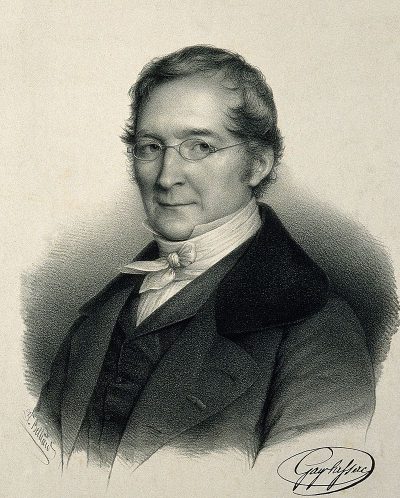Joseph Louis Gay-Lussac born on 6 December 1778 at Saint-Léonard-de-Noblat in France as the eldest of five children. He formulated two gas laws, analyzed the composition of Earth’s atmosphere at different altitudes, discovered the element boron and devised a measure of alcohol by volume, which came to be termed degrees Gay-Lussac. In 1808, Gay-Lussac working with Davy and Thénard isolated boron for the first time. Gay-Lussac is attributed to two gas laws, but the one he is most known for was actually first done by another French scientist named Jacques Alexandre César Charles but was published first by Gay-Lussac. Most chemistry texts refer to this law as Charles’s Law. Basically, it states that for a gas of constant pressure, changes in the volume will directly change the temperature.
Second law: Gay-Lussac found that when you mixed hydrogen and oxygen, you got water. He further noticed the ratio of volumes of the two gases was integer differences. For every volume of oxygen, it took two of the same volume of hydrogen to complete the reaction. Further investigation found this true for many other gas reactions. The Law of Combining Volumes was formed from these observations.
Composition of Earth’s Atmosphere: Gay-Lussac used the new technology of ballooning to measure the composition of gases in the atmosphere at different altitudes. He found that the composition of gases did not change with altitude.
Degrees Gay-Lussac: Measurements of how much alcohol in an alcoholic beverage is measured by a standard ABV or Alcohol by Volume measured as a percentage alcohol. Two different measures of ABV are alcoholic proof (twice the alcohol by volume) and degrees Gay-Lussac where the direct measure of alcohol by volume. For example, a wine with 12 percent alcohol would be listed as 12°.






